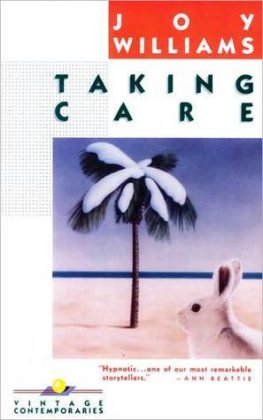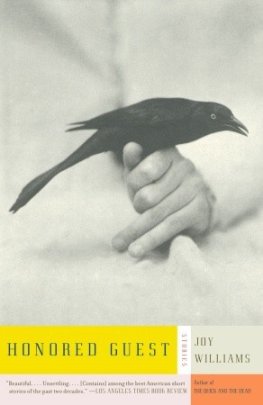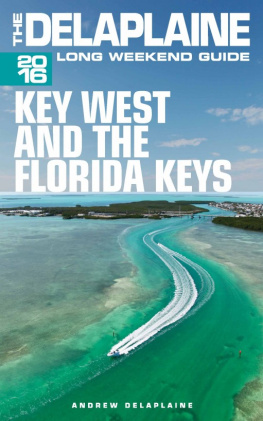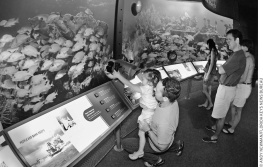2003 Random House Trade Paperback Edition
Copyright 1987, 1988, 1989, 1991, 1993, 1994, 1995, 1997, 2000, 2003
by Joy Williams
Illustrations copyright 1988 by Robert Carawan
All rights reserved under International and Pan-American Copyright Conventions. Published in the United States by Random House Trade Paperbacks, an imprint of The Random House Publishing Group, a division of Random House, Inc., New York, and simultaneously in Canada by Random House of Canada Limited, Toronto.
R ANDOM H OUSE T RADE P APERBACKS and colophon are trademarks of Random House, Inc.
This work was originally published in different form by Random House, Inc., in 1987. Revised and updated editions of this work were published by Random House, Inc., in 1988, 1989, 1991, 1993, 1994, 1995, 1997, and 2000.
LIBRARY OF CONGRESS CATALOGING-IN-PUBLICATION DATA
Williams, Joy.
The Florida Keys: a history & guide/by Joy Williams:
illustrations by Robert Carawan.
p. cm.
eISBN: 978-0-307-76381-5
1. Florida Keys (Fla.)Description and travelGuidebooks.
2. Florida Keys (Fla.)History. I. Title.
F317.M7W54 1991
917.59410463dc20 91-52658
Random House website address: www.atrandom.com
v3.1
CONTENTS
INTRODUCTION
The Florida Keys do not run due south. They drift southwest, Route 1 running more eastwest than northsouth. The Gulf side is actually Florida Bay, the upper reaches of which belong to the Everglades. The Bay side is called the backcountry or outback. The Atlantic side is actually the Straits of Florida, where wide Hawk Channel runs out from shore to the reef, which stretches the length of the Keys. Beyond the reef is the Gulf Streamout frontthat great oceanic river whose demarcation is clearly seen, the water being a profound and fabulous blue. Beyond the Gulf Stream lies, then, the ocean.
The Keys run from Biscayne Bay to the Dry Tortugas, a distance of some 180 miles. No road runs to the Keys north of Key LargoSands, Elliott, and Old Rhodesand the Tortugas are 70 watery, wild miles from Key West. The distance accessible by car is some 106 milesfrom Key Largo to Key West. That road, originally built in the 1930s, replaced Henry Flaglers Florida East Coast Extension railroad line, an amazing piece of engineering which had linked the Keys since 1912 and which was destroyed by a hurricane in 1935. The mile markers (MM #) referred to in this guidegreen signs with white numerals, posted on the right-hand shoulderwere first placed along the Keys by the railroad.
On a map the Keys look fairly improbableand Route 1, the line that drops down their sprinkled length, improbable too. The possibilities are vast, but the road itself is simple, which explains why some travelers begin at Key Largo, hang on to the steering wheel, and dont stop until Key West, heeding the billboards urging, GO ALL THE WAY, with all its attendant, randy implications of reckless fulfillment. Other travelers arrive in the Keys, love them, stick close to Islamorada, and wouldnt dream of going all the way, considering Key West weird if not bizarre, as though that singular and raffish place were at the bottom of an ever-darkening well.
But of course the Keys dont really go from light to dark. The Keys sparkle downward, warm and bright, full of light and air and a bit of intrigue. The Keys are relaxed, a little reckless. The Keys are water and sky, horizon, daybreak, spectacular sunsets, the cup of night. The least interesting thing about them is the road, but the road, as is its nature, allows entrance. The road is the beginning.
There are some automobile guides, such as the old Sanborn Guides to Mexico, that are wonderfully jittery backseat companions, not pointing out cathedrals and markets (because the route in question is manifestly lacking in cathedrals and markets) but taking great pains to point out everything else. A child selling an iguana is here; half a kilometer down the road you will pass a most peculiarly shaped boulder; a bit beyond that there was once a Pemex station, though unfortunately a Pemex station is no longer there, only a tire dump; two kilometers away the road curves. And so on.
The Keys once lent themselves to this sort of innocent treatment, and in a way they still do. There is the road, and there are the fitfully present descending markers accompanying you, suggesting that a trip is little more than coloring your own experience between provided lines. At MM # there is an egret; at MM # theres a pretty view between two violet jacaranda trees; at MM #, if you can wait that long, is a bar where the bartender wears live snakes wrapped around her neck and wristsher pretties, she calls them. And so on.
Time passes, of course. The snake lady is run over one night as she is crossing the road. Someone builds his dream house in front of the pretty view, cutting down the jacaranda trees in the process. But the Keys, though no longer the empty, silent stretches they once were, still markedly lack (you might as well be told) historical and cultural monuments. And the osprey still builds his nest larger each year at MM #. And the tarpon still roll and flash each spring under the bridge at MM #. And certainly at MM # the disreputable bar remains. The best way to enjoy the Keys is still to seek out their simplicity and their eccentricity.
The Keys had been largely ignored until the 1970s, the lack of fresh water being the real inhibitor to development. The Navy had built an 18-inch pipeline in 1942 that ran the 130 miles from the Everglades wells in Florida City to Key West. The water took a week to travel the route. In 1982 the old pipe was replaced with a 36-inch pipe, increasing the quantity fourfold, providing indeed an oversupply of water and accelerating building and population growth. Oddly, the pipeline, as well as the construction of new bridges and wider roads, took place seven years after the state had designated Monroe County, which is the Keys, an area of critical state concern in an attempt to slow development (a perfectly nice word that unfortunately has been stolen awayundoubtedly while we were not lookingby the developers). In the 1980s realtors dressed up in wood rat costumes and organized motorcades and rallies to protest new state guidelines that would restrict development in the Keys. Its true. People who felt themselves endangered by environmental laws dressed up like the cotton mouse and the wood ratpresent inhabitants of mangrove swamp and hammockand, aroused by lawyers and politicians, made a long, noisy trip down the highway to Key West, where the governor was speaking, picking up additional incensed rat- and mouse-garbed people along the way. This was typical oddball Keys, but in this case, peculiarity had a threateningly modern and consumptive edge, which is familiarly Floridian.
W. C. Barron, the founder of Wall Streets Barrons, said early in this century that the only values in the state of Florida are the values created by man. This was how the state was perceived by the wealthy who came from elsewhere to exploit it. Florida, that splendid, subtle, once fabulous state, has been miscomprehended and misused, drained and diked, filled in and paved over. The values of man have been imposed with a vengeance.
Half of the historic Everglades is now farms, groves, and cities, and this marvelous ecosystem isnt working anymore. Over the last 50 years, 90 percent of the Glades wading-bird population has been lost. To read the roll of its endangered species is heartbreaking. The reef is becoming increasingly stressed by sewage that flows quickly through the porous rock of the Keys and into the ocean, as well as by agricultural runoff from the mainland that gets dumped into Florida Bay from the Everglades. The rat-garbed protestors of the 80s recrudesced in the 90s as noisy foes of the National Marine Sanctuary, a designation conceived in 1990 that would protect and preserve the waters around the Keys, which need every bit of protection and preservation that they can get.













